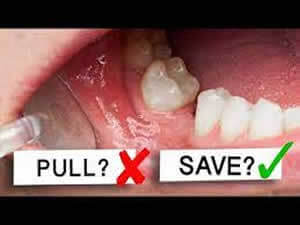A range of treatments can help, and the best option will depend on the cause of the looseness.
Treatments include:
- Scaling and root planing. This is a type of deep cleaning procedure that can treat and help to reverse gum disease.
- Medications or mouth rinses. These can help infected gums to heal and combat bacteria in the mouth.
- Surgery. The aim will be to remove inflamed gum tissue and bone that has been damaged by gum disease.
- Bone grafts. These can help to rebuild bone lost to gum disease.
- Soft tissue grafts. Also known as gum grafts, these can prevent further gum or tooth loss in people with gum disease.
- Dental appliances, such as bite splints. These can reduce damage from grinding and may help the mouth to heal after dental surgery.
- Treatment for diabetes. Appropriate treatment is important for dental health.
If a loose tooth falls out, a dentist can often restore a person’s smile with:
- A dental bridge. This type of crown fits over the teeth on either side of the missing tooth. The result is a bridge between two healthy teeth, connected by a prosthetic, or artificial, tooth in the place of the one that is missing.
- A dental implant. This involves an artificial tooth and root, which is connected to the jawbone.
While these options are effective, it is essential to treat the underlying cause of tooth loss and take any other steps needed to prevent further damage.
Attributed to https://www.medicalnewstoday.com/articles/322028#treatments
